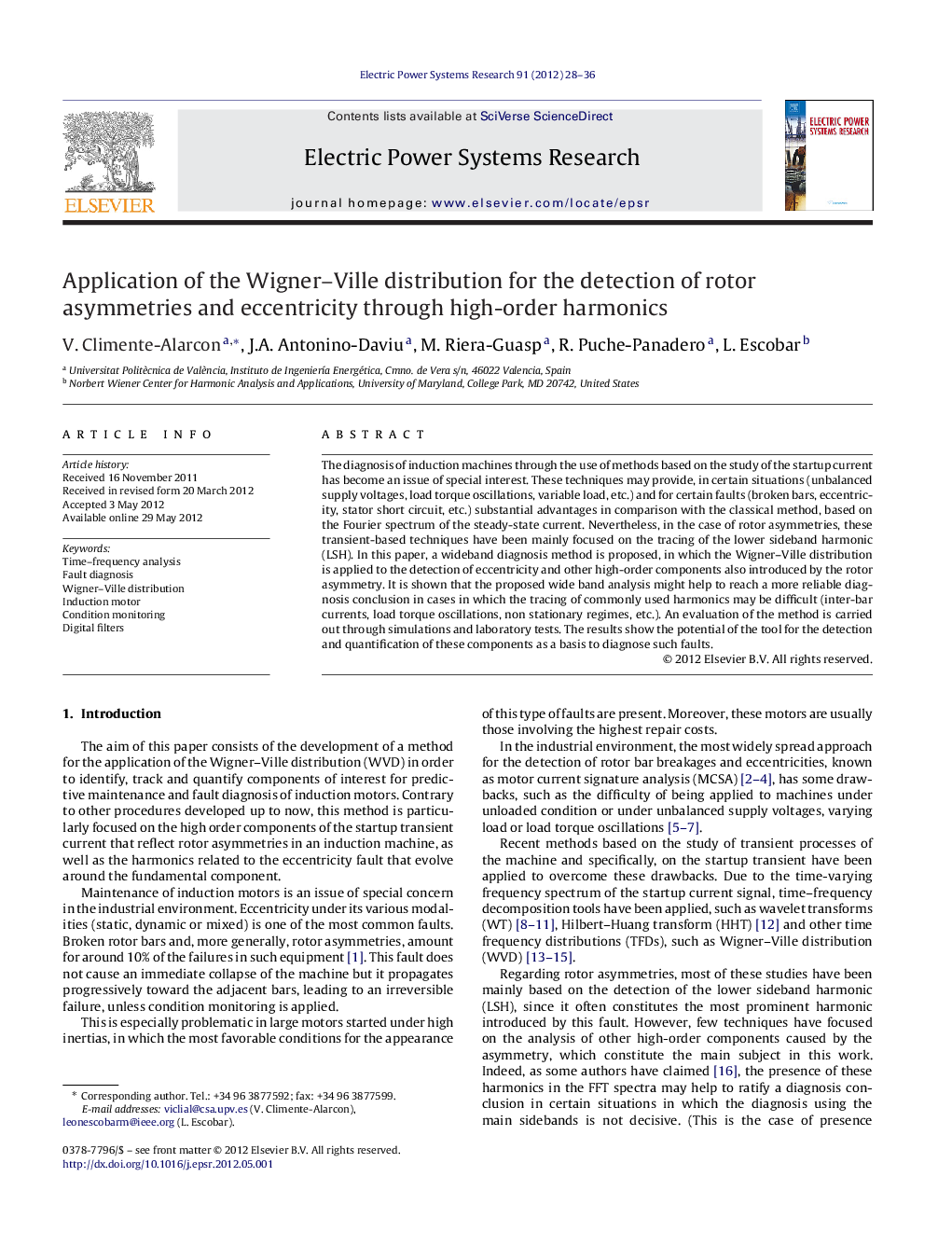| Article ID | Journal | Published Year | Pages | File Type |
|---|---|---|---|---|
| 705186 | Electric Power Systems Research | 2012 | 9 Pages |
The diagnosis of induction machines through the use of methods based on the study of the startup current has become an issue of special interest. These techniques may provide, in certain situations (unbalanced supply voltages, load torque oscillations, variable load, etc.) and for certain faults (broken bars, eccentricity, stator short circuit, etc.) substantial advantages in comparison with the classical method, based on the Fourier spectrum of the steady-state current. Nevertheless, in the case of rotor asymmetries, these transient-based techniques have been mainly focused on the tracing of the lower sideband harmonic (LSH). In this paper, a wideband diagnosis method is proposed, in which the Wigner–Ville distribution is applied to the detection of eccentricity and other high-order components also introduced by the rotor asymmetry. It is shown that the proposed wide band analysis might help to reach a more reliable diagnosis conclusion in cases in which the tracing of commonly used harmonics may be difficult (inter-bar currents, load torque oscillations, non stationary regimes, etc.). An evaluation of the method is carried out through simulations and laboratory tests. The results show the potential of the tool for the detection and quantification of these components as a basis to diagnose such faults.
► A wideband picture of the current startup transient is provided. ► Weak high frequency fault harmonics are detected and quantified. ► Similar fault and load effects can be differentiated. ► The method has been validated experimentally for broken bars. ► Other transients, such as plug stopping, have also been studied.
